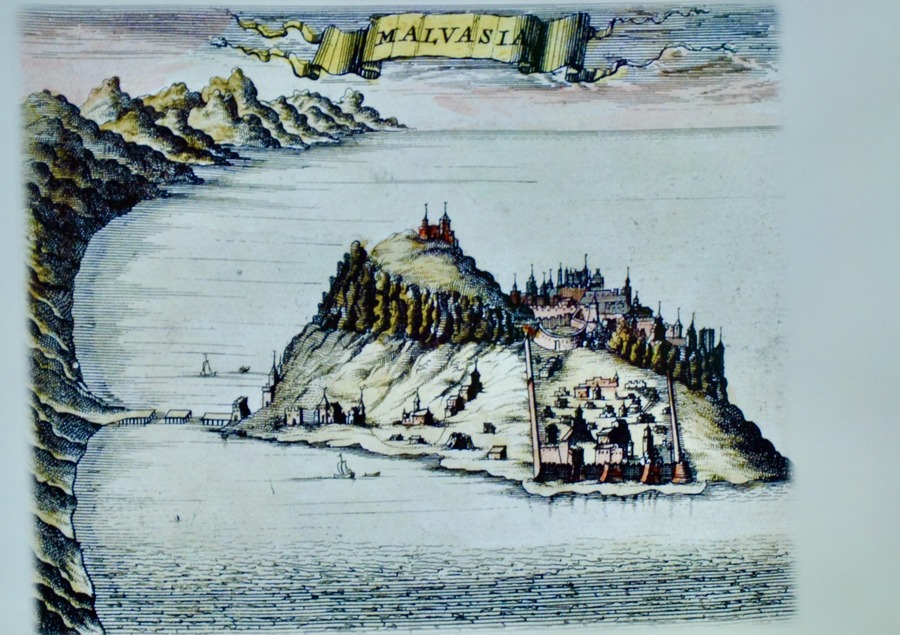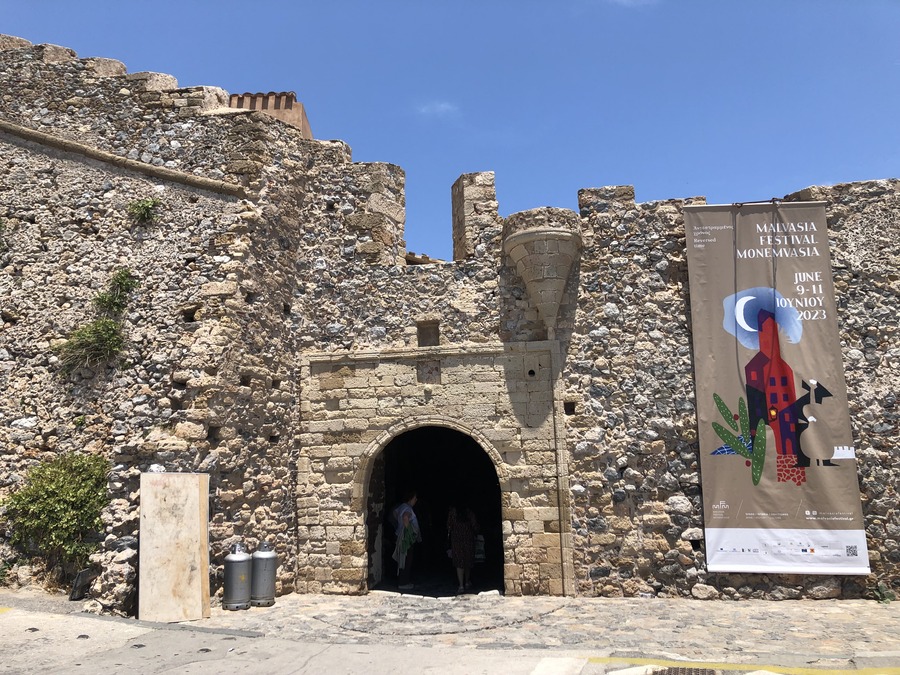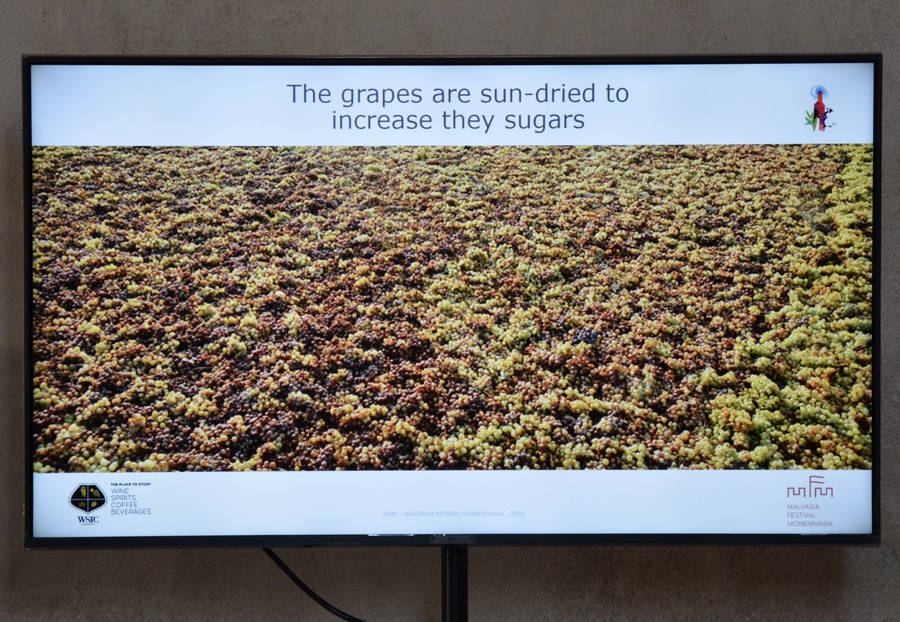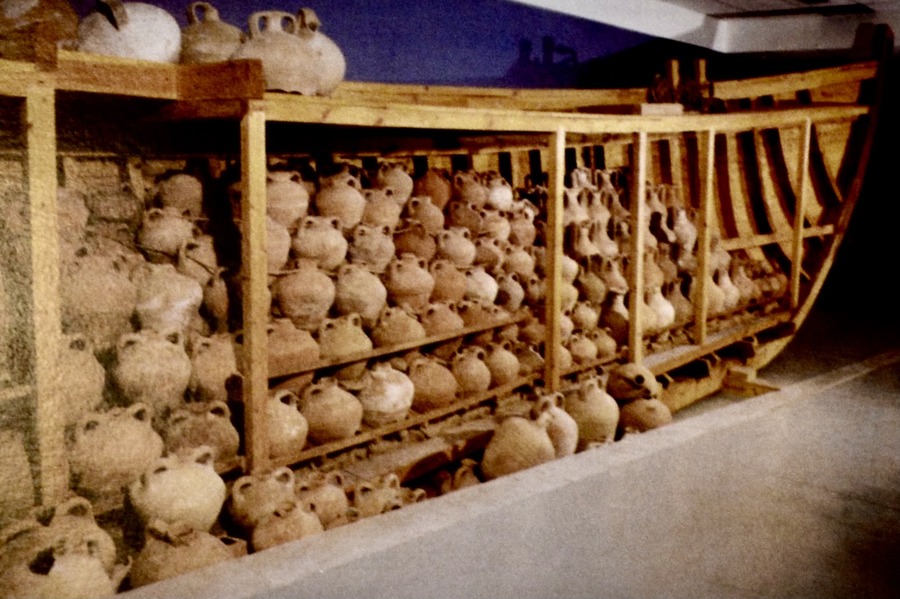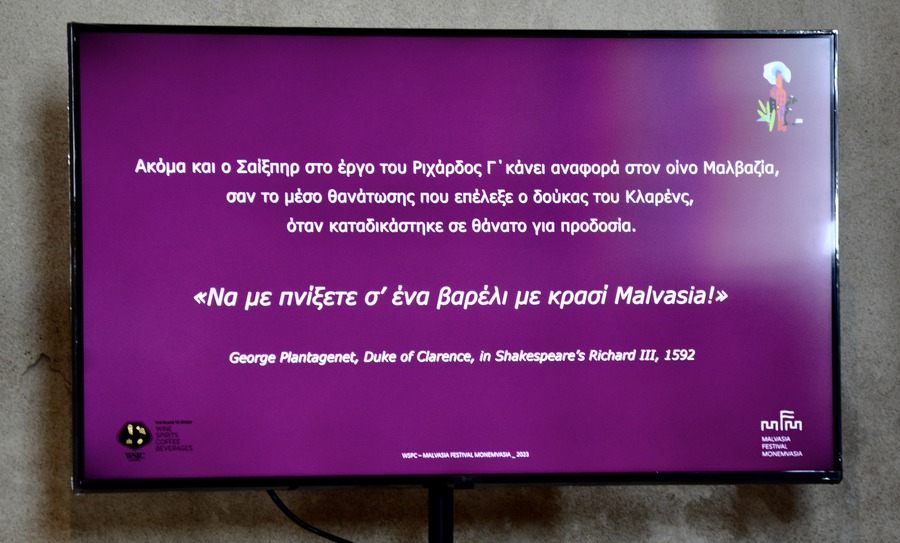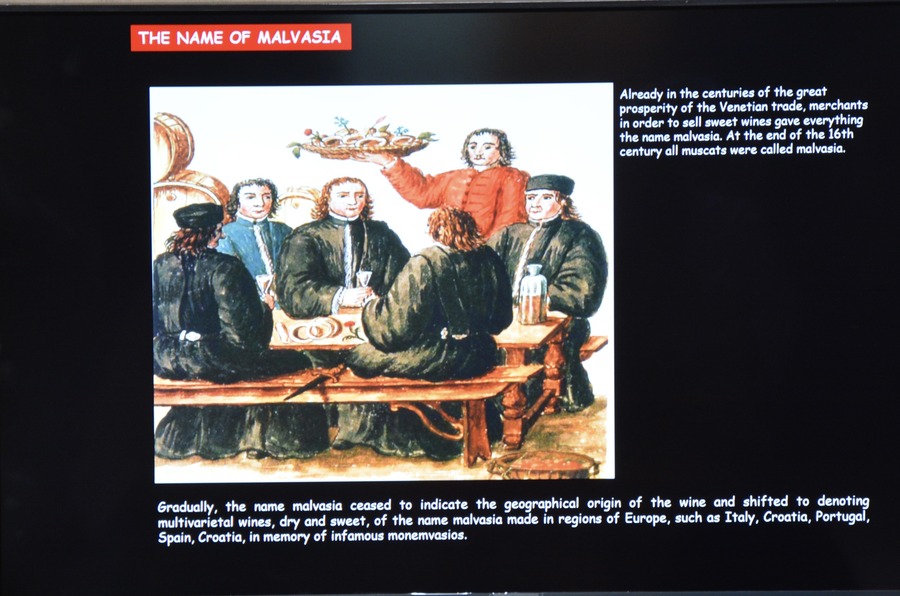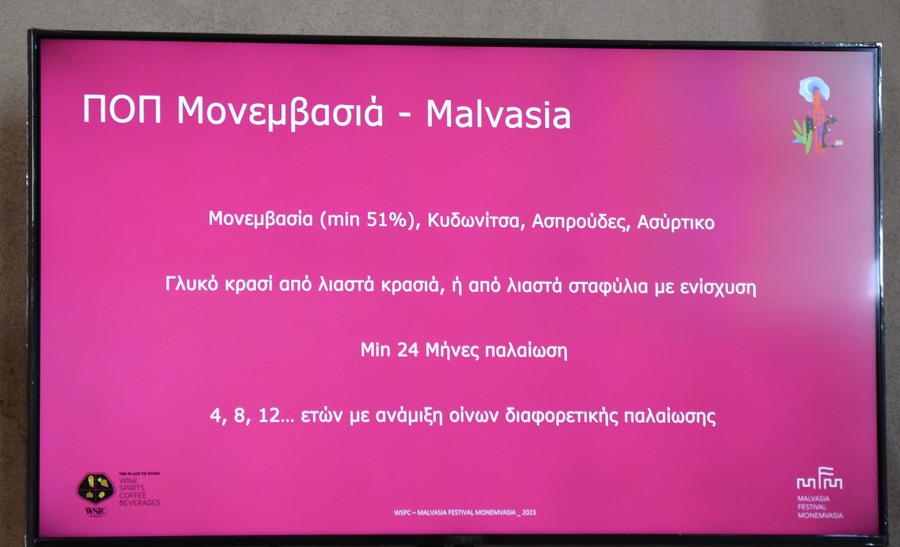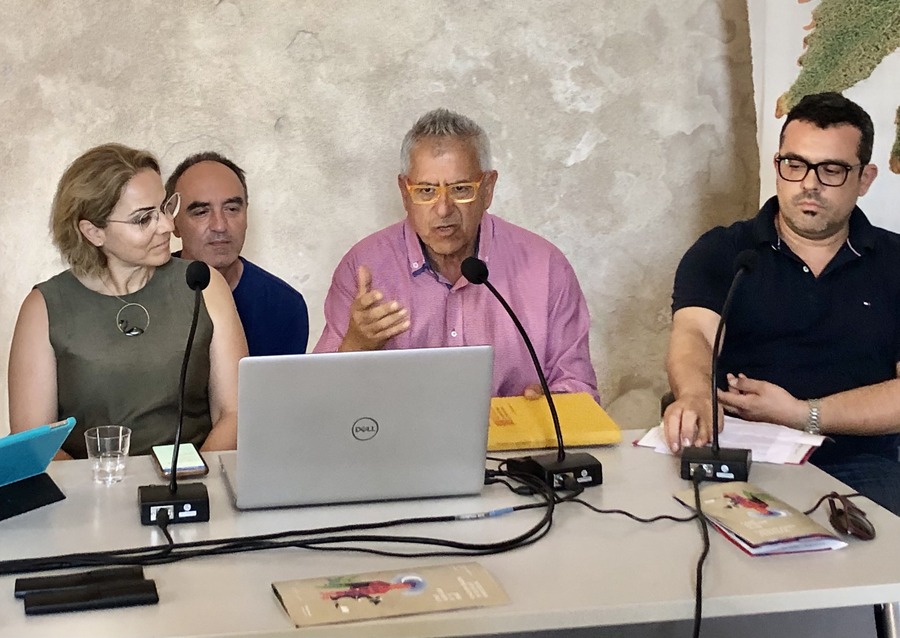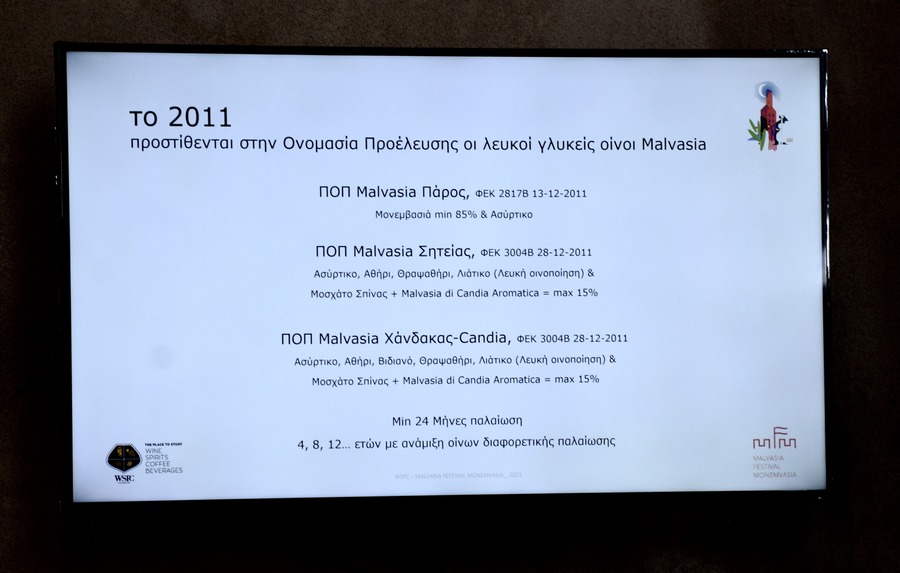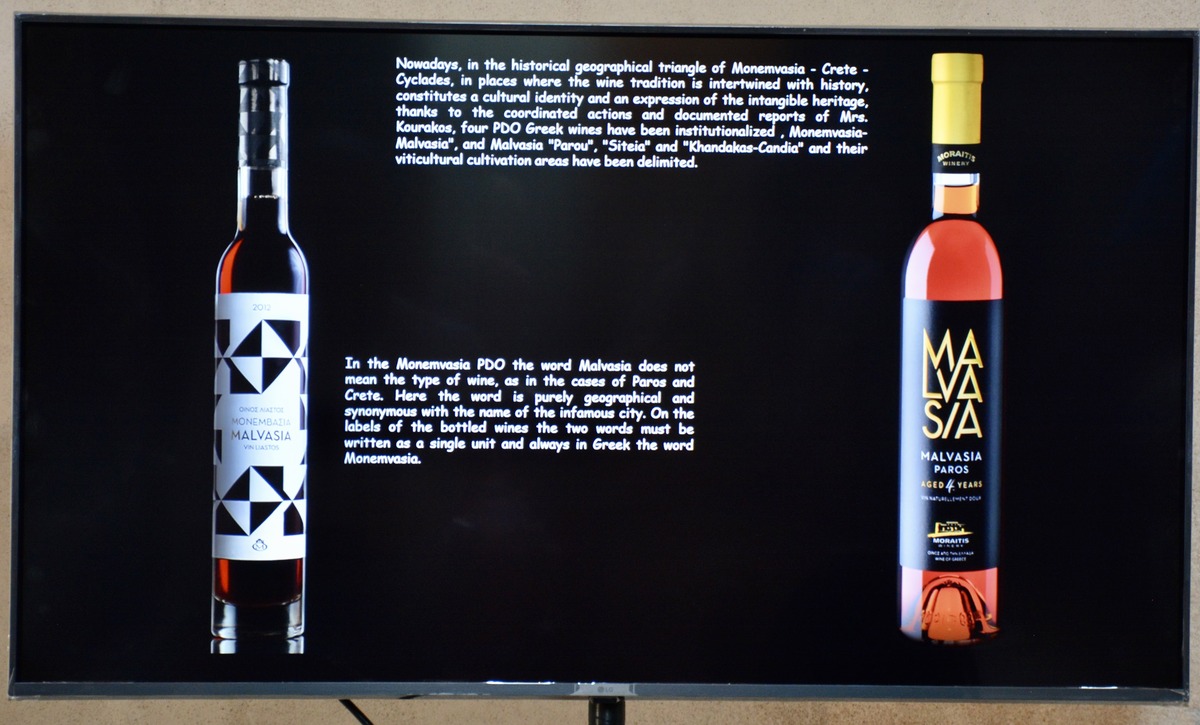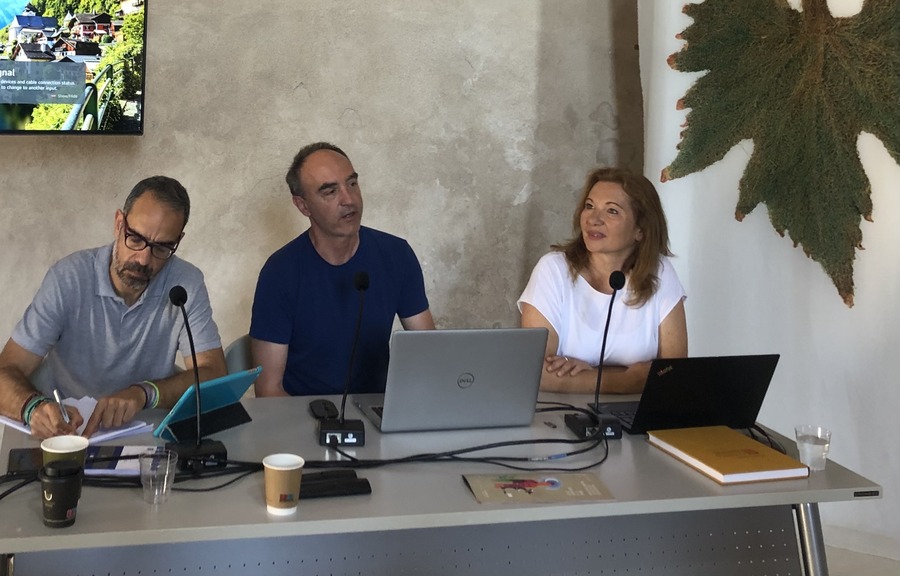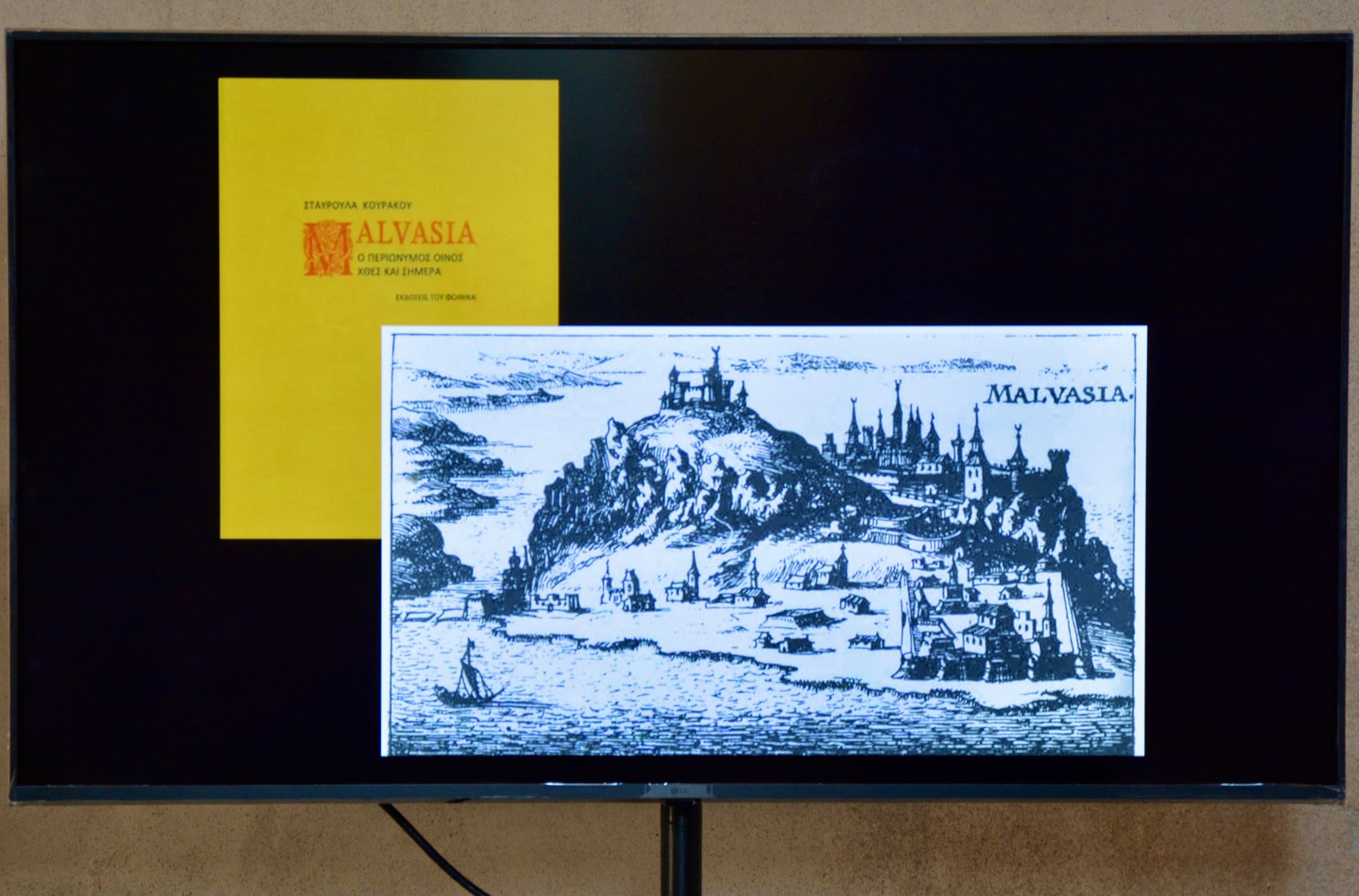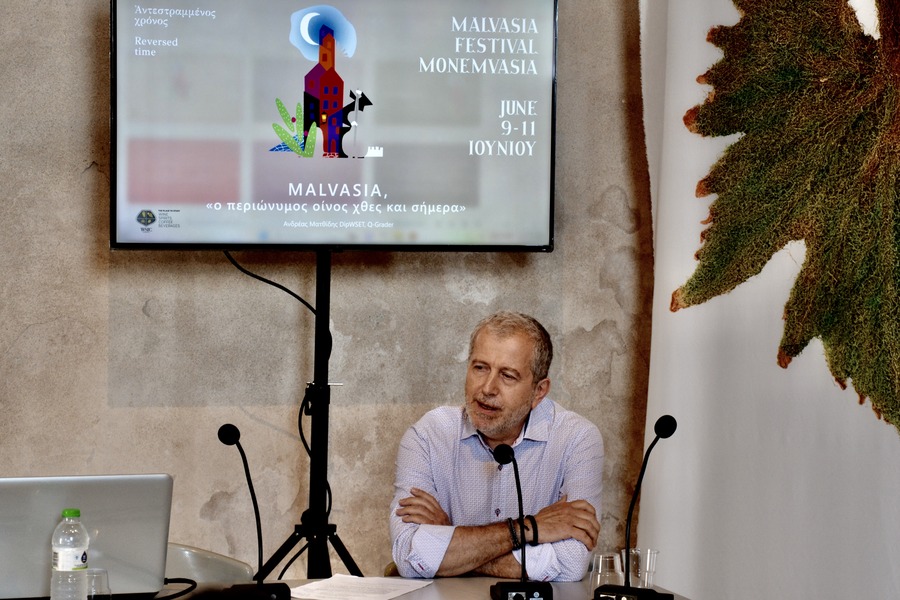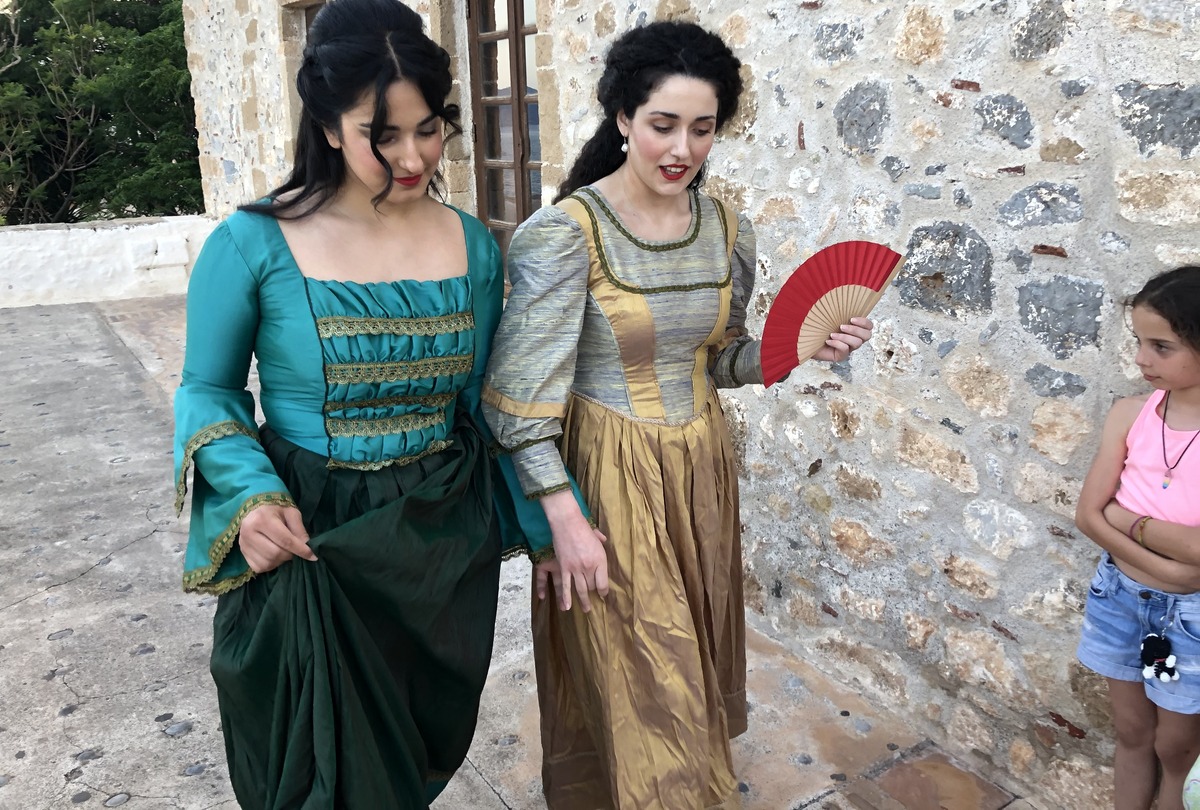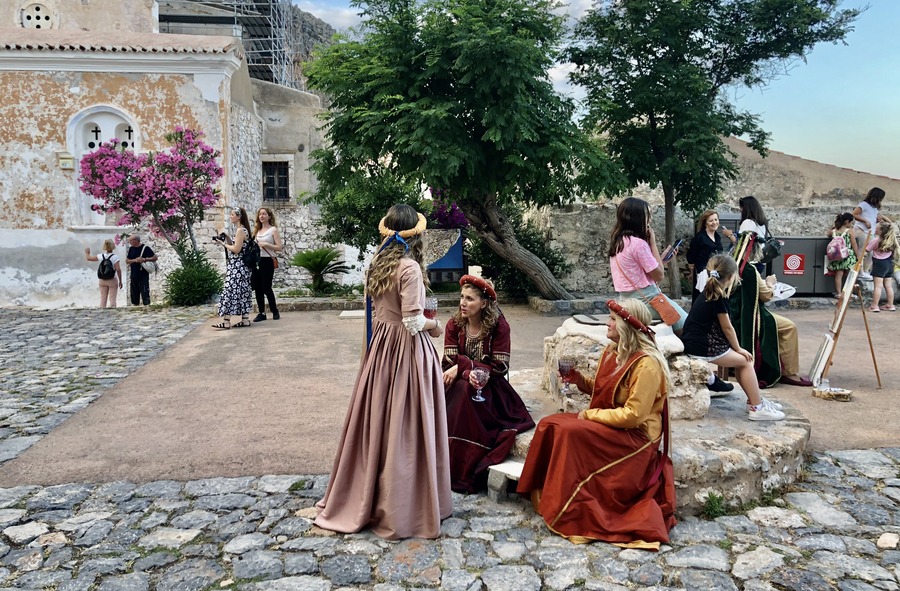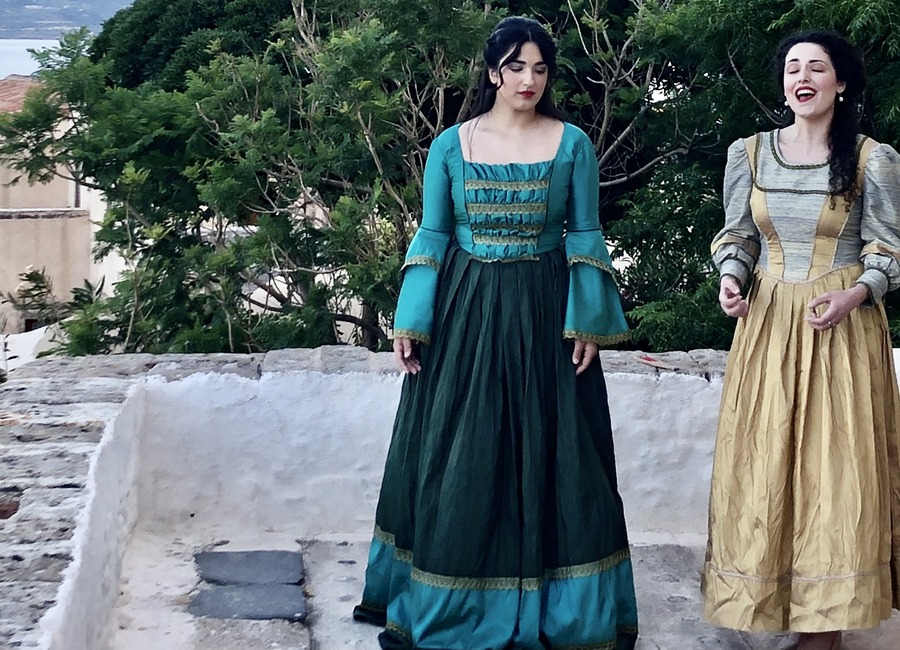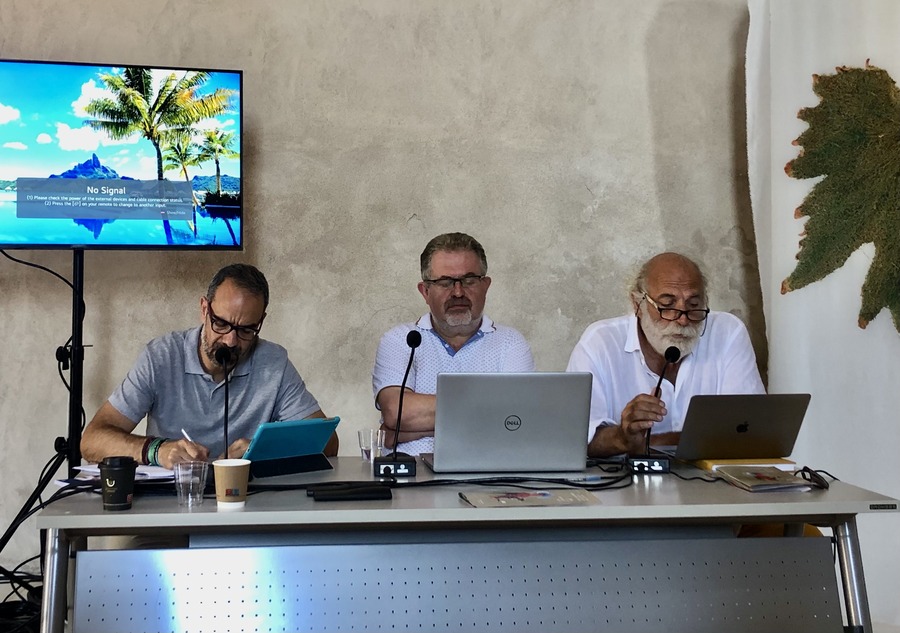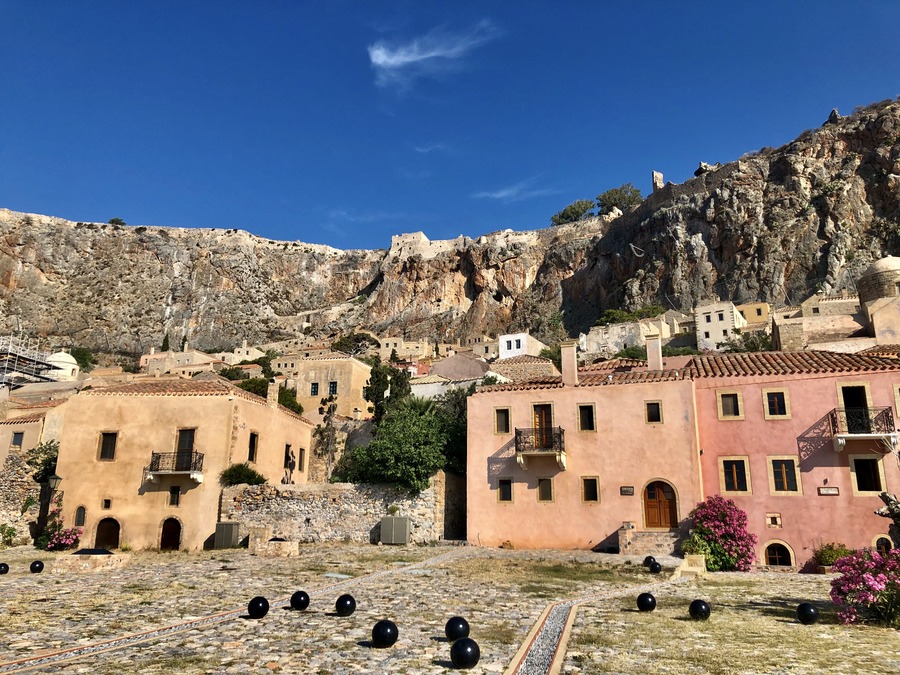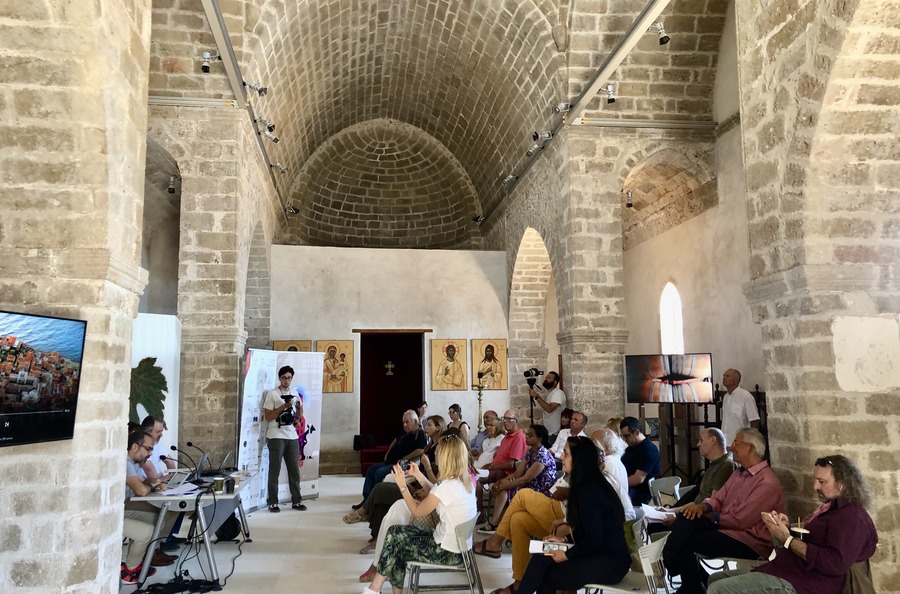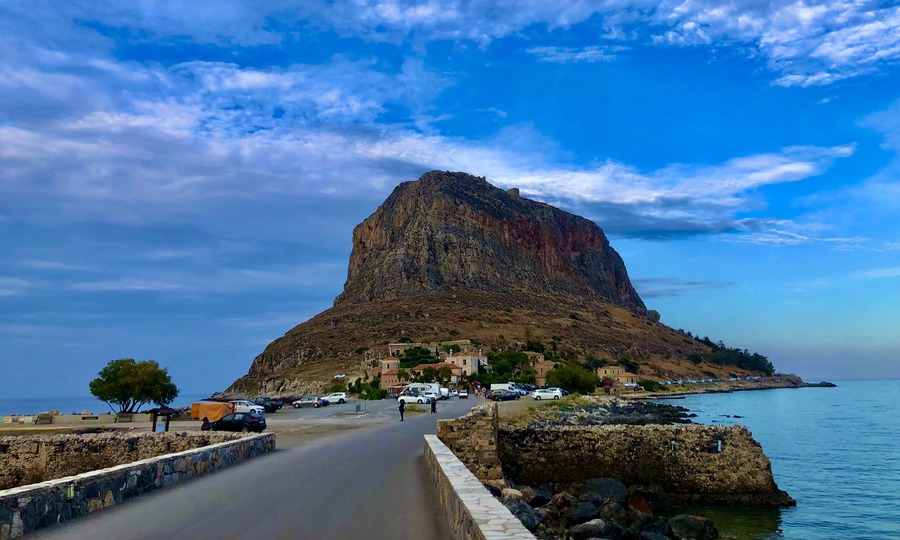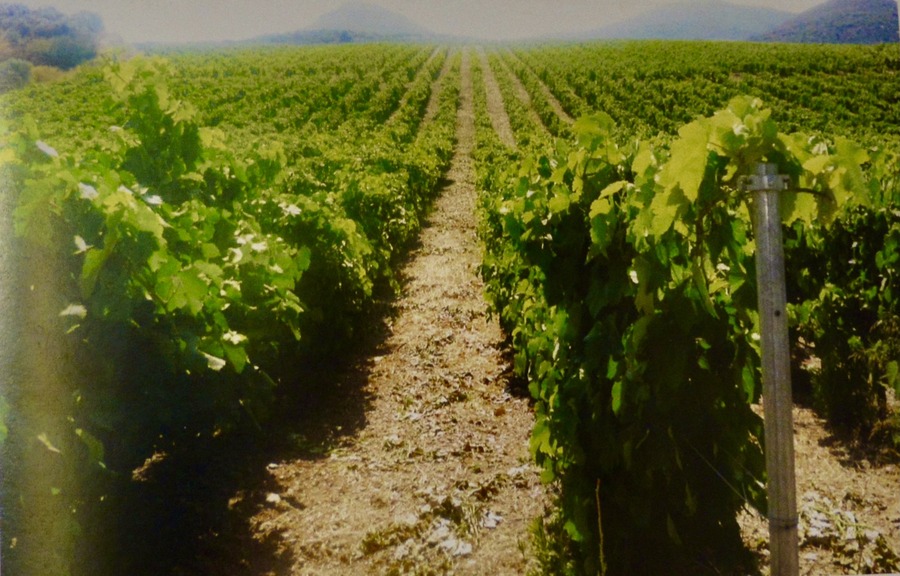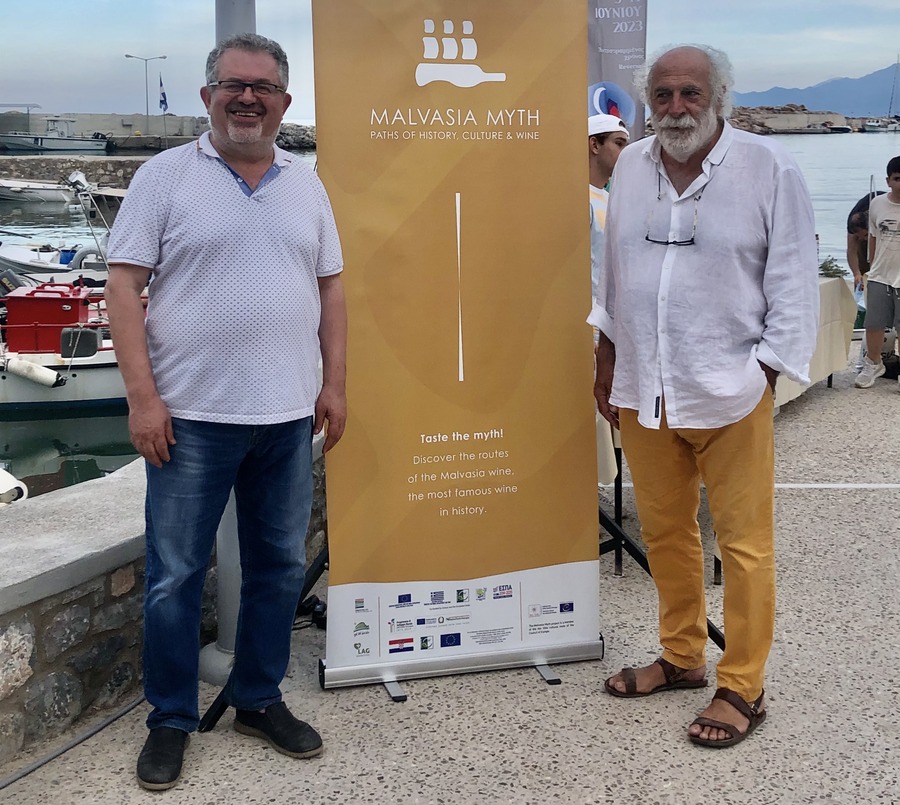That's it“Malvasia Festival Monemvasia” which we had the pleasure of attending during the three days of June 9-11, 2023, in the castle state of Monemvasia, and which attempted to connect the threads of the Malvasia wine adventure, -which took its first steps a millennium ago, in the beautiful place of Monemvasia - with today's reality, it was food for thought.
Thoughts that have to do with the management of the cultural assets of a place, the connection with its history, its present and its future, but also the role of gastronomy -whose main ingredient is wine-, in identity formation of a place and in its emergence as a tourist destination.
The history of Malvasia wine
As for the events, great emphasis was placed on presenting the history of the famous wine, which in a few words is as follows:
In the vines of its slopes Parnona (Malevos) a variety of local grapes were cultivated with Monemvasia as the protagonist, from which a sweet dry wine was produced, Monemvasios or Monemvasiotis or Monemvasia and according to Stavroula Kourakou, pr. President of the OIV – International Organization of Vine and Wine, production began before the 13th century in Byzantine Monemvasia.
From her book ""MALVASIA, the eponymous wine yesterday and today" published in 2020, we learn that due to the important commercial development of the city, the people of Monemvasi traded their wine, which the Venetian and Genoese merchants sold under the name Malvasia overwhelming her Venice, where the wine shops were named Malvasia.
Cultivation and production of Malvasia wine also took place in the Cyclades and Crete. After the occupation of Monemvasia by the Turks and the destruction of its vineyards, Malvasia's journey continued from Venetian-occupied Crete until the middle of the 17th century. As long as his rule lasted, he traveled to all the markets of the East and West.
It was exported to all the ports of the Mediterranean and the Black Sea, reaching the most demanding markets in Europe. The Venetians took care to transport Malvasia varieties to the Mediterranean and Europe, spreading the cultivation from Croatian and Italy until Spain and Canary Islands, The Portugal and Madeira (Malvasia – Malmsey).
Malvasia's reputation is reflected in many references by important figures of letters and art. In his work "Richard the Third" (1595). William Shakespeare the Duke of Clarence is murdered and drowned "in a Malvasia cask" (Malmsey butt).
Ο Leonardo da Vinci he had his own small Malvasia vineyard in Milan, the Nobel Prize-winning author Thomas Mann in the play "Buddenbrooks" brings two bottles of Malvasia from the cellar, Martin Luther, Alexandros Dumas, Guy de Maupassant are often referred to Malvasia, o Giuseppe Garibaldi cultivated Malvasia in Carpera, Sardinia, while the composer Giuseppe Verdi he was a good friend of Malvasia wine.
Today, different forms of Malvasia are produced in traditional countries (Greece, Italy, Croatia, Slovenia, Spain, Portugal) but also new ones (California, Arizona, Argentina, Brazil, Australia).
PDO Monemvasia-Malvazia and other Greek Malvasias.
The conditions for the creation of a PDO Monemvasia-Malvasia are the above.
The local Malvasias were spoken by Calliope Volitakis from Idaia Winery of Crete and Cretan Malvasia, Sotiris Bolis responsible for the artistic direction of the Festival, Mr George Tsimpidis from the Monemvasia Winery, initiator of the renaissance of Malvasia in Monemvasia, vintner and producer of Malvasia Monemvasia and the Thodoris Moraitis from Paros, of the estate of the same name that produces Malvazia Paros.
Traditional cultivation has been revived in the last 20 years in Monemvasia, pioneered by Giorgos Tsimpidis, where PDO Monemvasia-Malvasia wine has been produced since 2010, while a little later three more PDO Malvasia wines were established in Paros and Crete (Chandakas, Sitia).
Fesival events
Among the events that took place during the three days, the following stood out:
The day "Experience Malvasias of the World" where the following scientists and experts from Malvasia wine producing areas in Greece, Italy, Spain and Croatia participated, transferring their experiences and good practices on the vine and wine, gastronomy and taste, history and tradition, highlighting and the projection of the myth of Malvasia: Anna Grimau (Centre d'Interpretació de la Malvasia de Sitges, Spain), Enric Sebastian Barta (Viticulture and Oenology Researcher at the INCAVI Foundation, Associate Professor at Rovira i Virgili University of Tarragona, Spain), Ivan Marić (Director Vinistra, Croatia), Ivica Matošević (Winemaker, Vinistra Board Member, Croatia),
He was interested Wine masterclass with Malvasia wine as its subject, by Andreas Mattidis, President of the Panhellenic Union of Winemakers (PENO), pr. member of the Board of Directors of the International Association of Sommeliers (ASI). Presentation of Malvasia wines from Greece, Italy, Spain, Croatia.
MALVASIA, the perionymous wine yesterday and today
On Sunday, the first official presentation of Stavroula Kourakou's book was hosted "MALVASIA, the eponymous wine yesterday and today" (Phoenix Editions), which highlights the historical course, timeless value and importance of the historic Malvasia wine. The book was discussed by Christos Tsatsaronis, president of AMKE Monemvasia Malvasia, o Charalambos Leggas publisher of the book, Panagiota Skagou archaeologist of the antiquities office of Laconia and Andreas Mattidis, who gave a lot of characteristic information from the life and efforts of Stavroula Kourakou, the "lady of the vines" as she was called, a title of which she was very proud, much more proud than anyone else of those she held.
She published the book in 2020 and according to her statement, it was significant because it was the last one she wrote, and after that, at the age of 93, she "laid down her pen". It is worth noting that the "Lady of the Vines" (from his related poem Yannis Ritsou, who had a home and homeland in Monemvasia) and at the same time the lady of Greek wine, was the man who, from 1980, organized the Greek vineyard and registered the PDO wines of Greece.
Artistic events
Sounds ranging from medieval music in the Italian, French and Spanish courts, renaissance madrigals played on period instruments, to traditional and modern Greek songs were heard in the afternoon in various places in the city, while ladies from the Women's Union "The Monemvasiotisses" they represented the telalides and the "Venetian women" who roam the cobbled streets of the castle and tell the story of Malvasia!
The concerts we singled out.
Concert of Ex Silentio, Early Music ensemble, from the medieval and renaissance era, specializing in historically documented performances. Participants: Dimitris Kountouras, Theodora Baka, Irini Bilini-Moraitis, Tobias Schlierf. And the group of Marianna Polychronidis where Giorgos Skordalos, Andreas Arvanitis, Angelina Claudianou participate. Musical format with songs from the Cretan and Greek tradition as well as contemporary sounds.
Concert Cantistoria band, "Songs of the journey". Combining storytelling and music, Cantistoria takes a multilingual journey to corners of the world.
Concert Lilian Tsatsaroni, "I found you in Monemvasia" Songs from the artistic Greek repertoire with an emphasis on the poetry set to music by Yiannis Ritsos, wine and Monemvasia. A musical journey with one female and three male voices, accompanied by guitar, bouzouki and double bass.
The role of gastronomy in shaping the cultural identity of a place
Finishing with the events of the three days, I want to submit my speech, participation in the seminar on "Experience Malvasias of the World" which concerned the role of gastronomy in shaping the cultural identity of each place.
«If space is an abstract concept, containing the sense of spatiality, it becomes a place only when inhabited by people, who will "fill" it with their activities, the goods they will produce, their values and culture, with their emotions and dreams, leaving their imprint on it. Because, as Odysseus Elytis also said, "a landscape is not, as some perceive it, simply the totality of land, plants and waters, but the projection of the soul of a people onto matter".
If the duty of every citizen is to consciously inhabit his place, to know its history, its landscapes and legends, and to actively participate in the preservation of its cultural identity, the obligation of every place, of its inhabitants as a collective, is to be able to codify these characteristics and transmit them to his visitors so that they can get to know him deeply.
Today, all over the world, as a countermeasure to rapid globalization and cultural homogenization, modern societies are making a sharp turn towards localism, towards the reinterpretation of the world of tradition and local cultures, looking forward to the creation of a new system of values and a of a new cultural identity that draws juices and wisdom from the past of the place.
"The more local, the more universal", .... it is the characteristic slogan that straightens the stature of locality and repositions it in its universal dimension.
The most complete definition was given by the famous French chef of the 18th century Brigia- Savarin: "Gastronomy is the deep knowledge of everything that concerns human nutrition".
From the history of the cuisine of wealth, excess and display of Royal Courts and aristocracy, the research of New Historians (Annales school 1920) passed into the history of hunger, the problem of supplying the urban centers, the wars for the acquisition of food, the daily battles that humanity waged to ensure the calories of its survival, but also the history of world trade that to a large extent it was based on the movement of foodstuffs (cereals, coffee, pepper, tea, sugar, vegetables, fruits, etc.).
Nowadays, for those who want to get serious about gastronomy, they should see it as part of the self-knowledge of a place, as a wealth-producing and cultural resource, and less as a lifestyle game.
Gastronomy is the surest way to get to know her authenticity and the "demons" of a place, the beauty of its landscapes, the ethos and values of its people, to treasure intense experiences and unforgettable experiences. Because gastronomy is identified with the culture of everyday life, thus remaining the best way to penetrate the heart of a destination, which is the privileged field of experience tourism and quality tourism."
Conclusions
Η rediscovery of Malvasia in her birthplace, she comes to confirm all of the above, that is, the necessity of exploiting the cultural stock of each place, with the initiative of civil society.
The specific Malvasia promotion action is the result of the initiatives of local actors led by George Tsimpidis which started 25 years ago. In the first phase they collaborated with the great lady of European wine Stavroula Kourakou, which recorded the adventurous course of the world's most famous wine, discovering at the same time the place from where the journey began and in a second phase in 2010, when again with her own proposal the wine was registered PDO Monemvasia-Malvasia, while a little later three more PDO Malvasia wines were established in Paros and Crete (Khandakas, Sitia).
The first international festival "Malvasia Festival Monemvasia", culmination of these efforts, takes one more step, as it comes to connect Monemvasia, the birthplace of Malvasia, with all the production areass Malvasia -Croatia, Spain and Italy participating in the Festival- building an overall narrative, the “The Malvasia Myth”, a "myth" about the history and culture of Malvasia wine".
With a modern way and look, creating a new "cultural brand" for the mythical route of wine, for the different experience offered by each production region, and for their cultural value "Wine Road of Malvasia".
The creative management of the past, the creation of local myths and optimistic narratives, the interconnection of places based on some common cultural elements, and the formulating new collective international narratives it is the most comforting thing in the difficult times of homogenization that the global economic system is trying to impose. And Monemvasia through all these actions it will strengthen even more its historical position, making her even more so interesting destination.
Finally, I want to congratulate the contributors of the first one “Malvasia Festival Monemvasia” who contributed decisively to its success, with the hope that the institution will consolidate and justify the dreams of its pioneer initiators.
ORGANIZATION: AMKE Monemvasia-Malvasia
CO-ORGANIZATION: Municipality of Monemvasia, Region of Peloponnese
SUPPORT: Parnona Development Organization SA OTA, EN.O.A.P. – Wine Routes of Peloponnese, Iter Vitis – Cultural route of the Council of Europe, Π – PELOPONNISOS, Winery of Monemvasia, Dance Cultural Sports Association of Monemvasia “RIZES”, Women’s Association “The Ladies of Monemvasio”
sponsors: KONCREATE S.A., TETRAGON S.A.
SPONSORING-SUPPORT: Transnational Cooperation Project “Malvasia
Myth” of the LEADER/CLLD program www.malvasiamyth.com
MEDIA PARTNER: IONIAN
DESIGN: Primariolia AMKE |
ART DIRECTION: Sotiris Bolis
And I could not fail to mention by name the leaders of this impressive undertaking who led dozens of individuals, who with extremely moving efforts brought this work to fruition, namely Giorgos Tsimpidis, Marini Beretsos, Christos Tsatsaroni and Sotiris Bolis.

